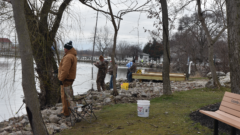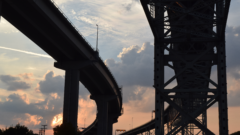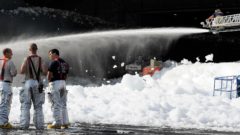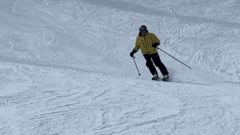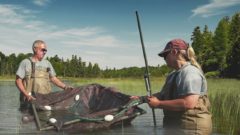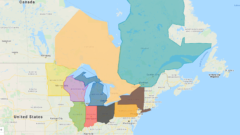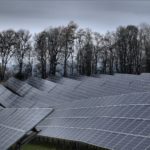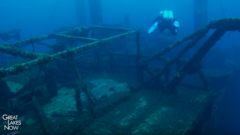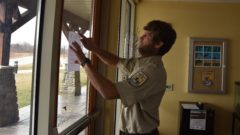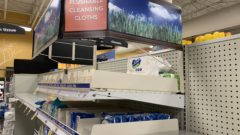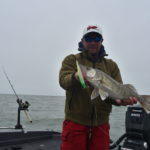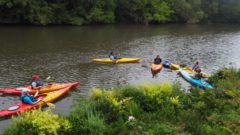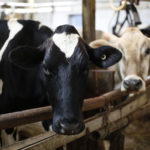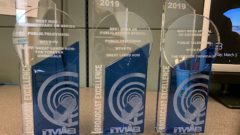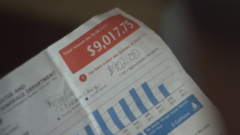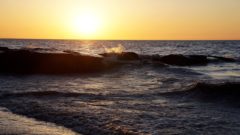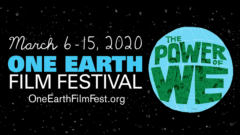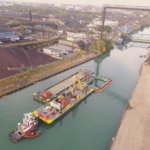Tighter Restrictions: COVID-19 makes it harder to cross Great Lakes borders between U.S. and Canada
PFAS News Roundup: Indiana restricts PFAS foam, Wisconsin utility sued, 651 military bases likely polluted
COVID-19 could cut millions of dollars of Michigan’s outdoor-related revenue
Inside Entertainment: COVID-19 has Great Lakes aquariums and museums offering online activities
Wetland Wisdom: Documentary looks at breakthrough in Great Lakes wetland research
Minnesota Court of Appeals sends PolyMet permit back to MPCA
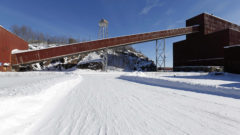
By Amy Forliti, Associated Press Writer
ST. PAUL, Minn. (AP) — The Minnesota Court of Appeals sent an air-emissions permit for the PolyMet copper-nickel mine back to state regulators for further review on Monday, giving another victory to environmental groups who oppose the project.
The appeals court found that the Minnesota Pollution Control Agency did not adequately evaluate whether the air permit requested by PolyMet was a “sham permit” — meaning one that didn’t accurately reflect the size and scope of PolyMet’s proposed mine.
Great Lakes Now
https://www.greatlakesnow.org/2020/03/ap-minnesota-court-appeals-polymet-permit-mpca/
PFAS Around the Great Lakes Region: Actions taken in each state or province and standards set, if any
Warm weather has ice fishing industry on thin ice
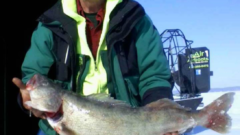
This article was republished here with permission from Great Lakes Echo.
By Hunter Hicks, Great Lakes Now
The lack of ice across the Great Lakes region has business booming for those in the ice fishing industry fortunate enough to have safe conditions, but has left others high and dry.
Great Lakes Now
https://www.greatlakesnow.org/2020/03/warm-weather-ice-fishing-industry/
Scientists testing alternative to road salt to protect water
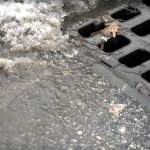
DULUTH, Minn. (AP) — Researchers in Minnesota are trying to find an alternative to road salt in an effort to protect the state’s water bodies from contamination.
The Minneapolis Star Tribune reported Saturday that road salt is the top source of chloride in state waters. Scientists have been ramping up warnings that rising chloride levels could harm aquatic life and turn tap water salty.
Great Lakes Now
https://www.greatlakesnow.org/2020/03/ap-scientists-testing-alternative-road-salt/
Great Lakes Energy News Roundup: Mich. “energy freedom” bills, Toledo low-income community solar project, Minn. Supreme Court backs frac-sand mining ban
Headline: Cutting Contact: U.S. and Canada cut cash transactions and non-essential travel at border
The Show Goes On: Films and producer chats move online for Great Lakes series
COVID-19 Changes: Great Lakes parks and tourist spots are closing, remaining open and waiting for summer
Rising waters threaten wells, drinking water systems
Great Lakes Echo
http://greatlakesecho.org/2020/03/18/rising-waters-threaten-wells-drinking-water-systems/
Flushing Caution: Oakland County Water Resources Commissioner asks people to properly dispose of cleaning products
Research Unknowns: COVID-19 puts Great Lakes field research prep on hold
Walleye: Lake Erie population skyrockets. Again.
Freshwater Weekly: March 13, 2020
|
||||||||||||||||||||||
|
||||||||||||||||||||||
|
Blog – Freshwater Future
https://freshwaterfuture.org/uncategorized/freshwater-weekly-march-13-2020/
Missing Opportunity: States, industry work together to promote outdoor recreation
Student Protesters Demand Lightfoot Live Up To Campaign Promises on Environmental Protection

By Brett Chase, Better Government Association, through the Institute for Nonprofit News network
More than two dozen Chicago young activists Friday called on Mayor Lori Lightfoot to reinstate a city department of environment to combat heavy pollution in black and Latino neighborhoods and increase efforts to fight climate change.
Great Lakes Now
https://www.greatlakesnow.org/2020/03/student-protesters-chicago-lightfoot-campaign-environmental-protection/
In-person sessions on Great Lakes water levels replaced by March 18 webinar
Face-to-face panels in Manitowoc, Somers and Mequon on Great Lakes water levels canceled; replaced by single online session
Due to concerns related to the spread of COVID-19, three face-to-face public information meetings about Great Lakes water levels have been canceled. These sessions were scheduled for Manitowoc (March 17), Somers (March 18) and Mequon (March 19).
The three in-person meetings have been replaced by a single online session, which will take place on Wednesday, March 18, from 6 to 8 p.m. People may attend this virtual session through Zoom at this web address: https://zoom.us/j/152994777
Additionally, a recording will be posted on Wisconsin Sea Grant’s YouTube channel after the events.
The online information session (like the in-person sessions that were canceled) will include experts from Wisconsin Sea Grant, the U.S. Army Corps of Engineers, the National Weather Service and the Wisconsin Department of Natural Resources. (See our earlier story about these sessions here.)
The issue is timely because Great Lakes water levels have been at or near record highs in recent months, prompting concern among many Wisconsin residents. The Zoom webinar will address what’s in store for Great Lakes water levels through spring and summer of this year.
Said Dr. Adam Bechle, a coastal engineering outreach specialist with Wisconsin Sea Grant who is helping organize the webinar, “It is unfortunate that we need to cancel the three face-to-face sessions, but it is the prudent choice given the COVID-19 situation and public health. We remain committed to sharing important information about Great Lakes water levels with the public, and the online webinar will allow us to do so. We encourage people to watch it live on March 18, or look for the recorded version later.”
Questions about the Great Lakes water levels webinar may be directed to Bechle at (608) 263-5133.
News Releases – Wisconsin Sea Grant
News Releases – Wisconsin Sea Grant
https://www.seagrant.wisc.edu/news/in-person-sessions-on-great-lakes-water-levels-replaced-by-march-18-webinar/
PFAS News Roundup: Ohio starts testing, Minnesota cleanup could cost $1.2 billion, DuPont might dodge liabilities
Recognition: Great Lakes Now earns three wins from Michigan Association of Broadcasters
Michigan Water Shutoffs: A test of governor’s commitment to social, environmental justice
Water authority transfers funding for bill assistance
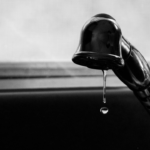
DETROIT (AP) — The Great Lakes Water Authority is transferring more than $1.6 million to Detroit and Flint for conservation education and to help customers pay past-due water bills.
Board members transferred the Water Residential Assistance Program funding from uncommitted 2019 bill assistance funds from Wayne, Oakland and Macomb counties.
Great Lakes Now
https://www.greatlakesnow.org/2020/03/ap-water-authority-transfers-funding-bill-assistance/
Struck Down: Federal court rules Lake Erie Bill of Rights unconstitutional
Michigan Supreme Court hears case over Flint water liability
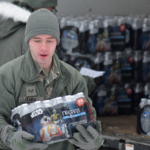
By Ed White, Associated Press Writer
DETROIT (AP) — Lawyers urged the Michigan Supreme Court on Wednesday to clear the way for Flint residents to sue state officials over lead-contaminated water.
The case at the state’s highest court is one of many in state and federal courts over the scandal.
Great Lakes Now
https://www.greatlakesnow.org/2020/03/ap-michigan-supreme-court-flint-water-liability/
Piping Plovers: Film fest spotlights endangered bird’s return to Chicago’s Lake Michigan shore
Eight years of Great Lakes underwater glider data now available to the public
NOAA Great Lakes Environmental Research Laboratory
NOAA Great Lakes Environmental Research Laboratory
https://noaaglerl.blog/2020/03/04/eight-years-of-great-lakes-underwater-glider-data-now-available-to-the-public/
Who’s in charge: Lack of storage facility oversight puts waterways at risk
Environmental groups sue to speed up lake sturgeon status

CHICAGO (AP) — Environmental groups in Illinois and Indiana have filed a federal complaint in hopes of forcing the U.S. Fish and Wildlife Service to complete a review that could designate lake sturgeon as a federally endangered species.
Lake sturgeon are a prehistoric fish that were once plentiful in the Great Lakes but have been reduced to extremely low levels by pollution, overfishing and habitat destruction.
Great Lakes Now
https://www.greatlakesnow.org/2020/03/ap-environmental-groups-sue-lake-sturgeon-status/
Experts host additional panels about Great Lakes water levels and their impact
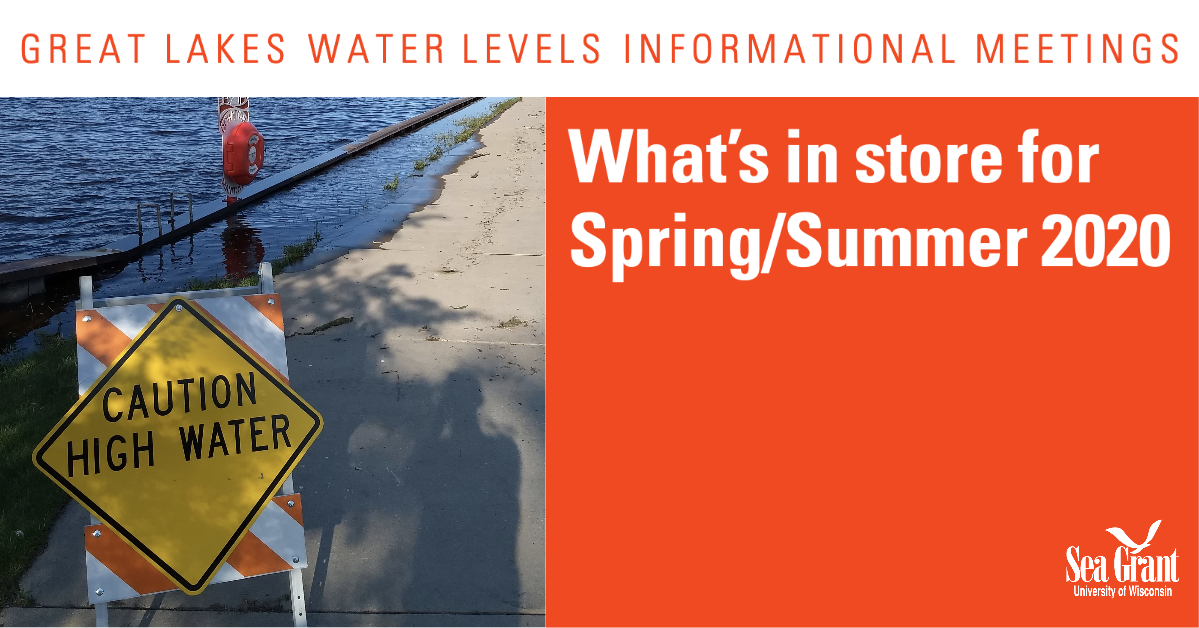 Great Lakes water levels have been at or near record highs in recent months, prompting concern among many Wisconsin residents.
Great Lakes water levels have been at or near record highs in recent months, prompting concern among many Wisconsin residents.
Those interested in learning what’s in store for Great Lakes water levels through spring and summer 2020 are invited to attend one of three upcoming informational meetings in communities along Lake Michigan.
At each session, attendees will hear from experts from Wisconsin Sea Grant, the U.S. Army Corps of Engineers, the National Weather Service and the Wisconsin Department of Natural Resources. There will also be time for attendees to ask questions. Seating at all sessions is available on a first-come, first-served basis.
The three sessions are:
Manitowoc: Tuesday, March 17, 6 to 8 p.m.
UW-Green Bay, Manitowoc Campus
University Theater
705 Viebahn St.
Manitowoc, WI 54420
Somers/Kenosha: Wednesday, March 18, 6 to 8 p.m.
UW-Parkside
Student Center Cinema
900 Wood Rd.
Somers, WI 53133
Mequon: Thursday, March 19, 6 to 8 p.m.
MATC Mequon Campus
Lecture Hall, Room A289
5555 W. Highland Rd.
Mequon, WI 53092
Dr. Adam Bechle, a coastal engineering outreach specialist with Wisconsin Sea Grant, will speak at all three panels. Said Bechle, “We have worked with federal, state and local partners to host a couple of these meetings in the past few months, and they have been quite well attended. With Great Lakes water levels already breaking records this year, demand for information continues to grow. These meetings will help folks understand the current water level situation, as well as possible steps forward to address the impacts of these high water levels.”
Those who are unable to attend the events in person may attend virtually through Zoom.
Additionally, a recording will be posted on Wisconsin Sea Grant’s YouTube channel after the events.
View or print an event flyer here.
View or print a list of resources for Great Lakes property owners here.
Questions about the events may be directed to Bechle at (608) 263-5133.
News Releases – Wisconsin Sea Grant
News Releases – Wisconsin Sea Grant
https://www.seagrant.wisc.edu/news/experts-host-additional-panels-about-great-lakes-water-levels-and-their-impact/
Great Lakes Moment: Decline of bird species should serve as a warning
Invasive mussels clear the water and coat the wrecks at Thunder Bay National Marine Sanctuary
Great Lakes Echo
http://feedproxy.google.com/~r/GreatLakesEcho/~3/0poMAYcy5qI/
Freshwater Weekly: February 22, 2020
|
||||||||||||||||||||||
|
||||||||||||||||||||||
|
Blog – Freshwater Future
https://freshwaterfuture.org/uncategorized/freshwater-weekly-february-22-2020/
Freshwater Weekly: February 16th, 2020
|
||||||||||||||||||
|
||||||||||||||||||
|
Blog – Freshwater Future
https://freshwaterfuture.org/uncategorized/freshwater-weekly-february-16th-2020/
Sinkhole Science: Groundwater in the Great Lakes
NOAA Great Lakes Environmental Research Laboratory
NOAA Great Lakes Environmental Research Laboratory
https://noaaglerl.blog/2020/01/29/sinkhole-science-groundwater-in-the-great-lakes/
Freshwater Weekly: January 24th, 2020
|
||||||||||||||||||||||
|
||||||||||||||||||||||
|
Blog – Freshwater Future
https://freshwaterfuture.org/uncategorized/freshwater-weekly-january-24th-2020/
Freshwater Weekly: January 9th, 2020
|
||||||||||||||||||||||||||
|
||||||||||||||||||||||||||
|
Blog – Freshwater Future
https://freshwaterfuture.org/uncategorized/freshwater-weekly-january-9th-2020/
Freshwater Weekly: January 2nd, 2020
|
|||||||||||||||||||||||||||||||||
|
|||||||||||||||||||||||||||||||||
|
Blog – Freshwater Future
https://freshwaterfuture.org/uncategorized/freshwater-weekly-december-2nd-2019/
Coalition Urges House to Vote on Great Lakes Restoration Re-authorization
Coalition Urges House to Vote on Great Lakes Restoration Re-authorization
Bi-Partisan bill would increase restoration funding from $300 million to $475 million per year.
ANN ARBOR, MICH. (December 4, 2019) – The Healing Our Waters – Great Lakes Coalition sent a letter to Speaker of the House Nancy Pelosi yesterday, urging the House of Representatives to bring H.R. 4031, the Great Lakes Restoration Initiative Act of 2019, to the floor for consideration this year. The act re-authorizes the successful Great Lakes Restoration Initiative and increases the annual authorization over five years from $300 million to $475 million per year.
“Over the past decade the GLRI has improved lives across Great Lakes communities after decades of environmental damage threatened public health, the regional economy, and drinking water,” the letter reads. “The GLRI has allowed the 8-state region to undertake one of the world’s largest freshwater ecosystem restoration projects. Since its inception, the initiative has resulted in economic returns of more than 3 to 1 across the region and made tremendous progress.”
Laura Rubin, director of the Healing Our Waters-Great Lakes Coalition, said:
“This funding re-authorization is excellent news for the 30 million Americans who rely on the Great Lakes for their drinking water, jobs, recreation, and way of life. Over the past decade, the Great Lakes Restoration Initiative has been producing results for communities across the region, but serious threats remain. This increased annual re-authorization acknowledges the work we have left to do. We thank Reps. David Joyce and Marcy Kaptur for their leadership, and we thank the region’s House delegation, who are working in a spirit of bi-partisan cooperation to make sure Great Lakes restoration and protection remain a national priority. We urge the House of Representatives to bring this bill to the floor without delay.”
The post Coalition Urges House to Vote on Great Lakes Restoration Re-authorization appeared first on Healing Our Waters Coalition.
Healing Our Waters Coalition
https://healthylakes.org/coalition-urges-house-to-vote-on-great-lakes-restoration-re-authorization/
Great Lakes Action Plan Offers Steady Path Forward
Great Lakes Action Plan Offers Steady Path Forward
Last month, the EPA released its long-awaited Great Lakes Restoration Initiative Action Plan III, outlining the strategy guiding federal actions to restore and protect the Lakes being undertaken by federal agencies in partnership with the region.
The plan’s release comes at a time when both the U.S. House and Senate are seeking to increase funding for the Great Lakes Restoration Initiative beyond $300 million per year. Over the last 10 years, Congress has invested over $3.1 billion in Great Lakes Restoration, and securing a strong action plan has long been a priority of the Healing Our Waters – Great Lakes Coalition.
The recently released plan for the Great Lakes hews closely to previously released action plans. It guides federal restoration efforts around four major priorities: cleaning up toxic hot-spots (so-called Areas of Concern), restoring fish and wildlife habitat, working to stop the spread of invasive species such as Asian Carp, and reducing agricultural runoff to fight toxic algal blooms in the Great Lakes.
Here’s our take on the EPA’s action plan:
1. These are the right priorities to focus on – taken together, they point to a solid plan for restoring and preserving the health of the Great Lakes.
2. It’s going to take robust funding and strong policy to make this plan a reality. In addition to robust funding for restoration projects, it will be essential to have strong policies in place that protect the Great Lakes and the waters that feed them. The Trump Administration and the EPA must reverse its decision to gut protections for streams, waterways and wetlands. With many cities and towns still living with unsafe drinking water, now is not the time to cut back on clean water enforcement. We need to strengthen clean water protections, not roll them back.
3. Robust investments in water infrastructure are also needed to ensure that restoration efforts last for the long term. Aging sewer and stormwater infrastructure threaten the health of the Great Lakes and the health of the millions of Americans who rely on the lakes for drinking water. The Great Lakes region faces at least $179 billion of needed improvements to its water infrastructure to provide local communities with drinking water and wastewater services. It’s imperative that Congress boost investments to fix our crumbling infrastructure.
4. The bipartisan support for Great Lakes restoration continues to pay dividends. Over the last decade, Republicans and Democrats have come together to make Great Lakes restoration a national priority and to provide much-needed funding for restoration efforts. That cooperation continues. Recently the U.S. Senate recommended increasing Great Lakes Restoration Initiative funding from $300 million to $310 million; and the U.S. House boosted restoration investments from $300 million to $320 million. The final budget is yet to be determined—yet it’s clear that bipartisan cooperation has been essential to success. The Great Lakes congressional delegation has shown great leadership to make that funding a reality.
5. Climate change will only exacerbate threats to the lakes—and needs to be taken into account as restoration efforts move forward. As climate change continues its course, the Great Lakes region is witnessing more intense storms, greater flooding, more shore erosion and more runoff pollution that fuels toxic algal outbreaks. These new challenges will require continued investment in the lakes, as well as solid plans to ensure that their worst effects can be mitigated.
6. Future plans must explicitly address equity and justice issues. Low-income communities and communities of color are bearing the brunt of environmental degradation caused by pollution and climate change. Yet, traditionally, these communities have been the least likely to have a seat at the table when solutions are being devised. Any plan to restore the Great Lakes must take these inequities into account and take the lead from these communities.
Moving forward, the Healing Our Waters – Great Lakes Coalition looks to work with Congress to finalize the restoration funding allocation and maintain funding for the long term. We also seek to secure funding to upgrade vital water infrastructure and to eliminate the rollbacks of clean water protections that threaten the health and vitality of our lakes.
The post Great Lakes Action Plan Offers Steady Path Forward appeared first on Healing Our Waters Coalition.
Healing Our Waters Coalition
https://healthylakes.org/great-lakes-action-plan-offers-steady-path-forward/
Millions of Microbes: The Unexpected Inhabitants of Lake Huron’s Underwater Sinkholes
NOAA Great Lakes Environmental Research Laboratory
NOAA Great Lakes Environmental Research Laboratory
https://noaaglerl.blog/2019/10/10/millions-of-microbes-the-unexpected-inhabitants-of-lake-hurons-underwater-sinkholes/
Exploring the diversity of native species with Great Lakes Water Life
NOAA Great Lakes Environmental Research Laboratory
NOAA Great Lakes Environmental Research Laboratory
https://noaaglerl.blog/2019/09/04/exploring-the-diversity-of-native-species-with-great-lakes-water-life/
Special Two-Day Science Translation Session at IAGLR 2019
NOAA Great Lakes Environmental Research Laboratory
NOAA Great Lakes Environmental Research Laboratory
https://noaaglerl.blog/2019/03/18/two-day-session-highlighting-the-importance-of-science-translation-at-iaglr-2019/
NOAA and partners team up to prevent future Great Lakes drinking water crisis
NOAA Great Lakes Environmental Research Laboratory
NOAA Great Lakes Environmental Research Laboratory
https://noaaglerl.blog/2019/03/04/noaa-and-partners-team-up-to-prevent-future-great-lakes-drinking-water-crisis/
Improving lake effect snow forecasts by making models talk to each other
NOAA Great Lakes Environmental Research Laboratory
NOAA Great Lakes Environmental Research Laboratory
https://noaaglerl.blog/2018/12/06/improving-lake-effect-snow-forecasts-by-making-models-talk-to-each-other/
The HAB season is over, but the work goes on
NOAA Great Lakes Environmental Research Laboratory
NOAA Great Lakes Environmental Research Laboratory
https://noaaglerl.blog/2018/12/03/the-hab-season-is-over-but-the-work-goes-on/
Understanding Deep Water
Earth Day is April 22nd and is celebrating its 45th anniversary this year. This year we want to celebrate the month of April by showcasing our commitment to protecting the environmental health of our local communities, Wisconsin and the planet through environmentally based education, research and outreach at UW—Green Bay, the Original EcoU!
The Northeast Wisconsin Groundwater Management Area (GMA) consists of all of Brown County, as well as parts of Outagamie and Calumet Counties. The GMA has an area of around 700 square miles, lies completely within the Great Lakes drainage basin, and is home to more than 350,000 people. Millions of gallons are pumped from the confined deep aquifer in northeastern Wisconsin each day for industrial, commercial, municipal, and residential uses. Some cities now use Lake Michigan surface water for their water supply. Green Bay switched to surface water in 1957 followed by eight surrounding municipalities in 2007. These communities still retain many of their high capacity wells to serve as alternative sources in case of emergencies. This switch to surface water has caused a significant rise in groundwater level in the deep aquifer.
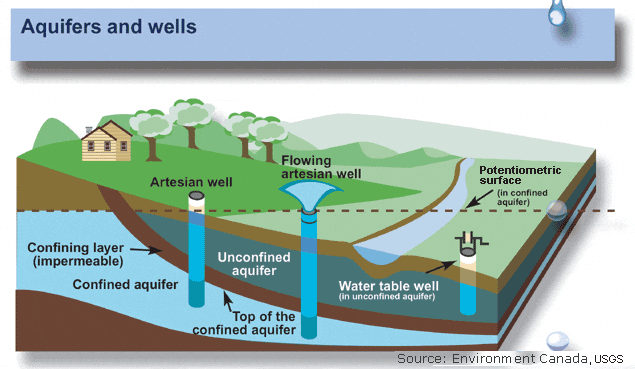
Groundwater in sandstone in the deep aquifer is isolated or confined in the GMA by 3 different overlying stratigraphic rock layers. Some of these rock layers contain groundwater contaminated by bacteria and nitrate or contain faults or fractures that may permit contaminated water to flow into the deeper aquifer.
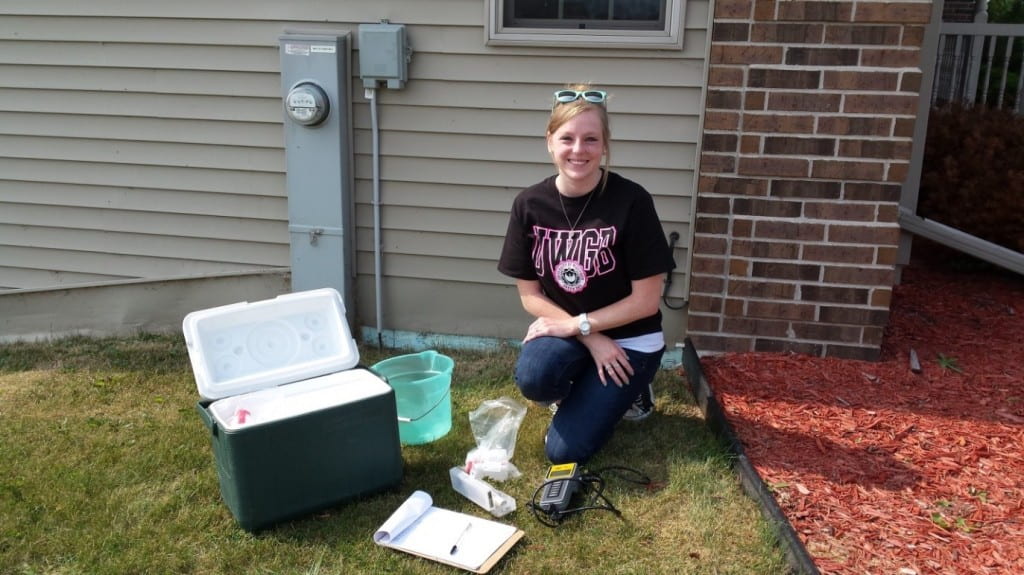
UW–Green Bay Graduate student Amanda Hamby is working with Associate Professor John Luczaj from the Department of Natural & Applied Sciences to answer the following questions about water in this deep aquifer:
- Do regional faults have an effect on water chemistry in the confined deep aquifer in northeastern Wisconsin?
- How has water chemistry changed in the Northeast Wisconsin Groundwater Management Area since Green Bay and other municipalities stopped pumping water from the aquifer?
They are collecting water samples from a number of wells in the GMA to assess for alkalinity and a number of ions in the water. Samples will be radio-carbon dated to get an idea of how old the water in the deep aquifer actually is. Amanda is also collecting stable isotopes of oxygen and deuterium that can be used to follow water movement through the atmosphere, surface waters, and into the aquifer. Amanda is using the isotope data she collected in conjunction with GIS mapping to create a natural isotope landscape or “isoscape” of the Northeast GMA deep aquifer, one of very few such maps of deep aquifers.
The results of this project will increase our understanding of how local faults affect groundwater chemistry and water quality in the northeastern Wisconsin. This project will also aid in our understanding of how groundwater level increase in the confined deep aquifer has affected water quality in the Northeast GMA.
Amanda’s research is supported by a grant from the NAS Heirloom Plant Fund at UW–Green Bay.
Biodiversity
https://blog.uwgb.edu/biodiversity/2015/04/understanding-deep-water/

